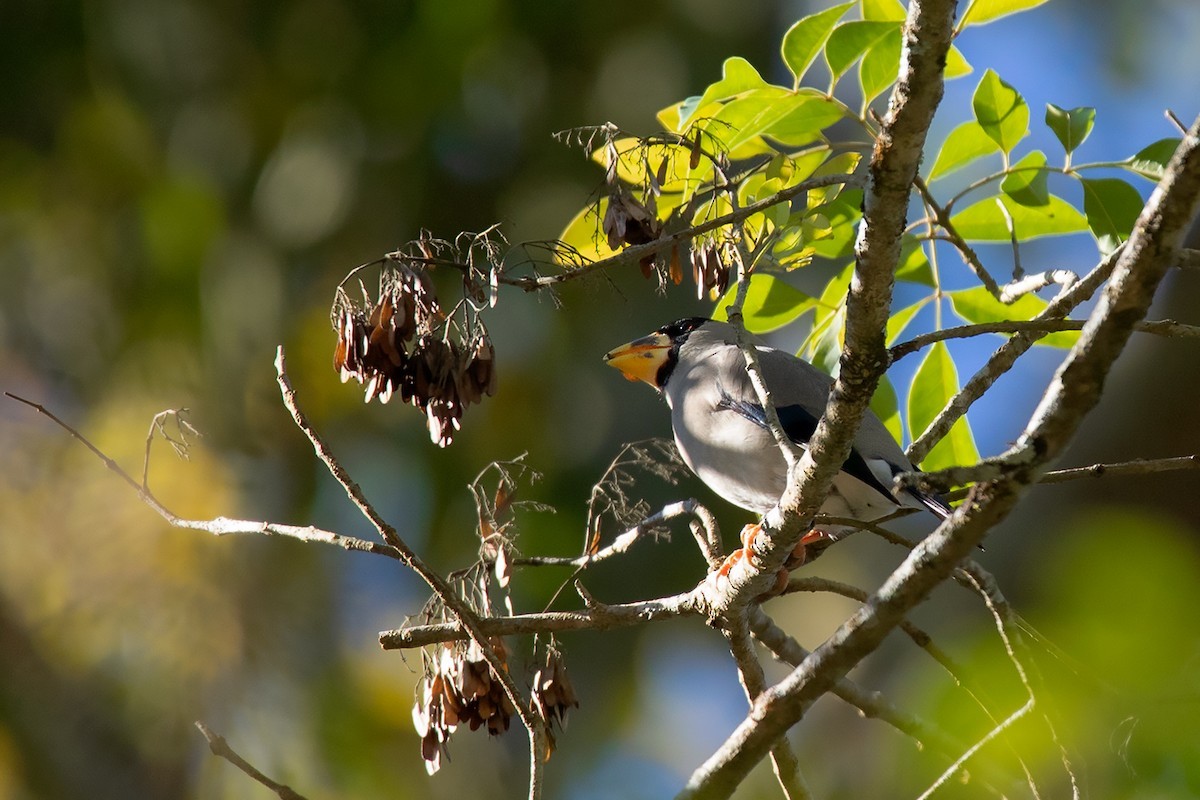Japanese Grosbeak
A species of Chinese Grosbeak and Japanese Grosbeak Scientific name : Eophona personata Genus : Chinese Grosbeak and Japanese Grosbeak
Japanese Grosbeak, A species of Chinese Grosbeak and Japanese Grosbeak
Botanical name: Eophona personata
Genus: Chinese Grosbeak and Japanese Grosbeak
Content
Description General Info
 Photo By Ayuwat Jearwattanakanok
Photo By Ayuwat Jearwattanakanok Description
This is a large finch, with a reported weight of 80 g (2.8 oz) (for a single male) and a length of 18 to 23 cm (7.1 to 9.1 in). Among standard measurements, the wing chord is 10.2 to 11.7 cm (4.0 to 4.6 in), the tail is 8.3 to 9.5 cm (3.3 to 3.7 in) and the culmen is 2.1 to 2.6 cm (0.83 to 1.02 in). The signature feature of the Japanese grosbeak is its large, pointed bright yellow bill. The adult grosbeak has a large black marking extending from the nape to the chin and ear-coverts to the neck. The side of the neck is a contrasting pale whitish grey. The bird's underside is a more dull grey. The back is greyish-brown while the flanks are washed with a gingery or tawny-brown colour. The wings and tail are black but for a white patch on the inner-coverts and band of white in the middle of the primaries, which is visible in flight. Juveniles are a duller grey overall with no black on head. The subspecies, E. p. magnostris is slightly larger than the nominate race. It is also generally paler in tone with a smaller white patch the on primaries. Among the vocalizations issued by Japanese grosbeaks include a short but hard tak tak note given in flight. The song of these birds consists of a series of four flutey whistles. 
Size
23 cm
Nest Placement
Tree
Feeding Habits
Japanese Grosbeak's diet mainly consists of seeds from cedar, pine, and birch, and fruits, including berries, with a seasonal preference for Korean pine seeds in colder months. They also eat insects, beetles, and caterpillars, especially in summer. Japanese Grosbeak forages in trees and bushes, typically in pairs or small flocks, often concealed by foliage.
Habitat
The habitat of japanese Grosbeak encompasses mixed and deciduous forests, where species such as birch and oak are prevalent. They are also found in areas with cedar, spruce, and fir trees. These birds favor well-wooded hills and river valleys, often venturing to the fringes of cultivated lands, as well as parks and gardens, primarily within lowland regions.
Dite type
Granivorous
General Info
Feeding Habits
Bird food type

 Photo By Ayuwat Jearwattanakanok
Photo By Ayuwat Jearwattanakanok